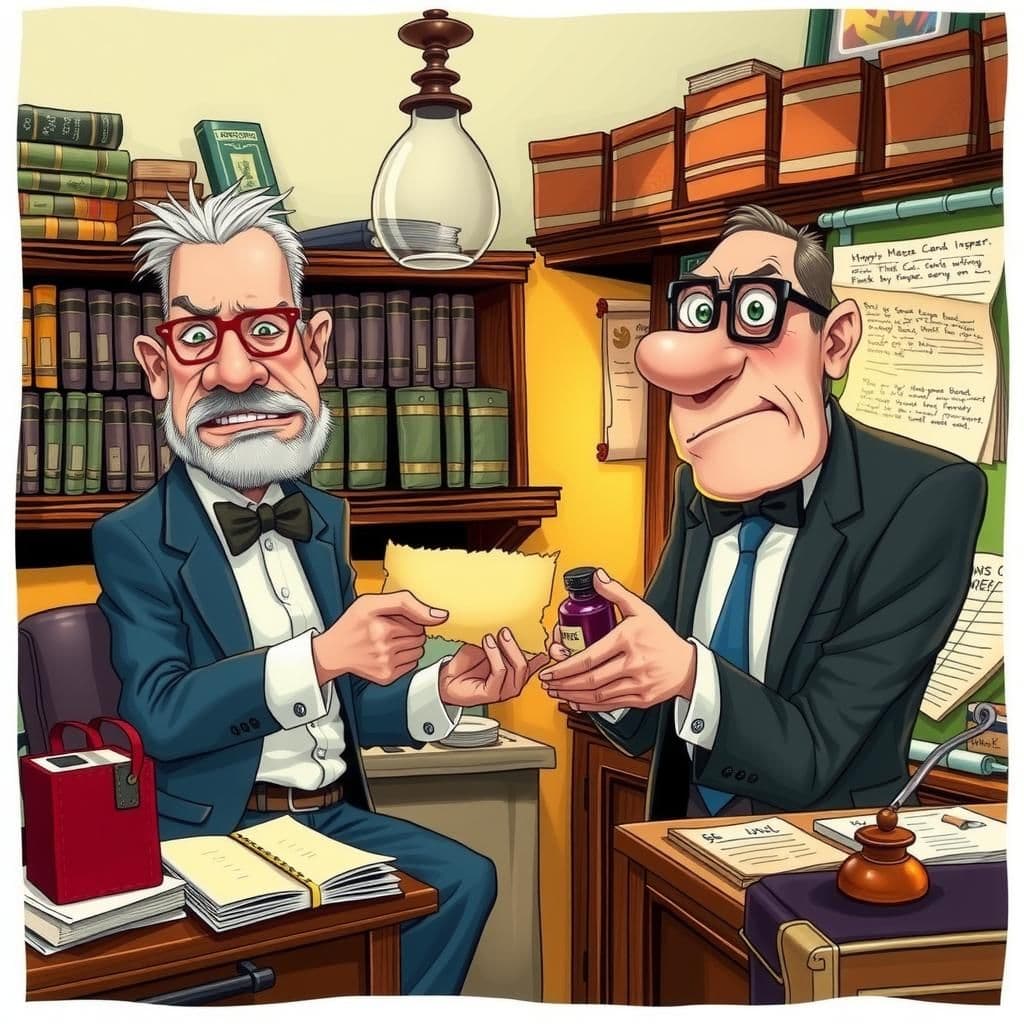The Noser and the Note

Story Summary
In "The Noser and the Note," an insolvent bank's Head Rifler attempts to deceive an inspector by presenting a personal note as a liability, leading to a satirical exploration of financial mismanagement and the absurdity of legal loopholes. As the inspector ultimately issues a certificate of solvency, the story serves as an impactful moral tale that critiques reliance on deception, reminding readers of the importance of integrity in the face of adversity. This short and sweet moral story highlights the thin line between survival and ethical behavior, making it a thought-provoking addition to inspirational stories with moral lessons.
Click to reveal the moral of the story
The story illustrates the absurdity of financial deception and the reliance on superficial appearances to mask deeper insolvency.
Historical Context
This story reflects the satirical tradition of financial and bureaucratic critique prevalent in 19th-century literature, reminiscent of works by authors like Charles Dickens and Mark Twain, who often exposed the absurdities and moral failings of institutions. The narrative's humor and irony highlight the precariousness of financial systems and the complexities of accountability, echoing themes found in earlier tales like Aesop's fables, which also critiqued societal norms through allegory. The use of absurdity to address serious issues is a hallmark of literary satire, making the story both a commentary on economic practices and a reflection of the cultural anxieties surrounding finance and governance in times of economic instability.
Our Editors Opinion
This story highlights the dangers of financial deception and the complacency that can arise in the face of accountability, which remains relevant in today's world of corporate scandals and economic crises. For example, a modern company might inflate its balance sheet by misclassifying debts as assets, leading to a temporary boost in stock prices, but ultimately risking severe legal consequences and loss of trust when the truth is revealed.
You May Also Like

The Man and His Two Sweethearts
In this entertaining moral story, a middle-aged man courts two women—a younger one seeking youthfulness and an older one embarrassed by their age difference. Their attempts to modify his appearance lead to a comical outcome, as both women pull out all of his hair, leaving him completely bald. The tale serves as a simple moral story illustrating that trying to please everyone can ultimately result in losing everything.

The Stag the Wolf and the Sheep
In "The Stag the Wolf and the Sheep," a Stag seeks a measure of wheat from a Sheep, promising the Wolf as a guarantor. The cautious Sheep declines, fearing both parties' deceit, illustrating the lesson that two dishonest individuals do not create trust. This wisdom-packed moral story teaches young readers that caution is essential when dealing with untrustworthy characters.

The Wolf and the Horse
In "The Wolf and the Horse," a cunning Wolf attempts to deceive a Horse by claiming to have left a field of untouched oats for him. However, the Horse sees through the ruse, pointing out that if oats were suitable for the Wolf, he would have eaten them himself. This famous fable illustrates a powerful moral about how individuals with a bad reputation often struggle to be trusted, even when they try to perform good deeds, highlighting the impact of storytelling with morals in our understanding of character and trust.
Other names for this story
Banking Blunders, The Liability Dilemma, Noser's Inspection, Fortitude and Finance, Notes of Deception, The Asset Illusion, Ink and Insolvency, The Pocketer's Plight
Did You Know?
This story satirically highlights the absurdities of financial practices and the concept of solvency, suggesting that sometimes, the appearance of legitimacy can overshadow the underlying truth of insolvency and deceit in banking.
Subscribe to Daily Stories
Get a new moral story in your inbox every day.